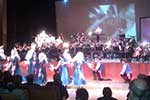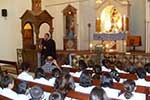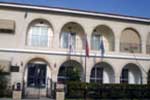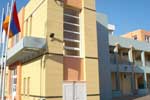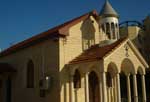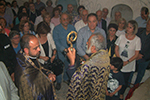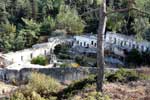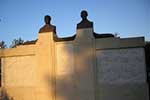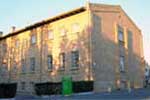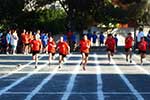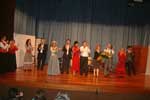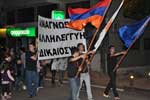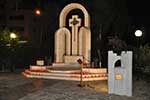Η Στήλη του Σασσουνιαν

TWENTY YEARS AFTER THE EARTHQUAKE MUCH DONE MUCH LEFT TO BE DONE
I am in Armenia at the invitation of the Prime Minister to participate in the special commemorations marking the 20th anniversary of the Armenian earthquake.
It is hard to believe that 20 years have passed since that tragic day when the world learned the horrifying news that a major natural disaster had struck Armenia. How much more suffering could a nation endure that has already experienced so much tragedy throughout its history?
Precisely at 11:41 a.m. on Dec. 7, 1988, a devastating earthquake registering 6.9 on the Richter scale shook the land, reducing to rubble 21 cities and 365 villages, and leaving over half a million people homeless in the Northern part of the country.
How many Armenians perished on that fateful day? The most commonly mentioned figure of 25,000 seriously underestimated the actual death toll. Tens of thousands of Armenian refugees, escaping from Azerbaijan due to the Artsakh (Karabagh) conflict, had settled in Northern Armenia prior to the earthquake. It is not known how many of them died along with local inhabitants.
The whole world rushed to the rescue. Aid flowed to Armenia from more than 100 countries. Countless organizations and individuals, Armenian and non-Armenian alike, delivered humanitarian supplies and carried out reconstruction. Some continue to this day.
I vividly recall the first anniversary of the earthquake when a cargo plane from Los Angeles, chartered by the United Armenian Fund (UAF) --an unprecedented coalition of seven major Armenian-American charitable and religious organizations -- landed in Yerevan with 30 tons of relief supplies and a small group of volunteers.
We trucked the supplies to three villages in the hills above Spitak, the epicenter of the earthquake, and distributed the food packages and warm clothing to hundreds of freezing families who were huddled under tents, amid several feet of snow.
Nothing compares to the heartwarming feeling one gets from handing over vitally needed supplies directly to destitute men, women and children and seeing tears of gratitude in their eyes. With every box, we were delivering to these families a message of hope and encouragement, letting them know that they were not abandoned to their fate and that Armenians from around the world cared for them and shared their pain. The UAF is faithfully continuing its assistance to this day, having delivered since the earthquake over $550 million of aid on board 150 airlifts and 1550 sea containers.
On December 7, 2008, thousands gathered in cities throughout the world to commemorate the 20th anniversary of the Armenian earthquake. The most noteworthy commemoration took place in the earthquake zone itself. Pres. Serzh Sargsyan, His Holiness Catholicos Karekin II, high ranking clergymen, government officials, and foreign dignitaries gathered in the appropriately named Sourp Yot Verk, Yegeghetsi (Church of Seven Wounds) in Gumri, to mark this cataclysmic event.
At precisely 11:41 a.m., a moment of silence was observed. It was an emotionally charged experience to be standing at the spot where the earth shook with such devastating effect 20 years ago. After the memorial service, an impressive monument by renowned sculptor Fredrich Sogoyan was unveiled in the center of Gumri.
Pres. Sargsyan delivered the keynote speech during which he reiterated his campaign promise to provide housing by the year 2013 to several thousand families in the earthquake zone who are still without proper shelter. Certainly, much good work has been carried out in the devastated region by the Republic of Armenia, scores of countries, international organizations, charities and benefactors. But twenty years is much too long to have people still living in containers and temporary shelters. And 2013 adds another 5 years to their miserable existence. Urgent action must be taken to house these long-suffering people as quickly as possible. The residents of Gumri and other surrounding cities should be provided housing, schools and jobs so they can finally live normally.
The Armenian government should be commended for organizing a most fitting 20th anniversary commemoration. However, in view of the international outpouring of support during the earthquake, a special effort should have been made to invite and honor many prominent individuals from around the world, such as French Foreign Minister Bernard Kouchner and the son and grandson of Pres. George H. W. Bush, who had rushed to Armenia immediately after the earthquake to aid the victims. Armenia had only invited a handful of high-ranking officials from the former Soviet Union, notably, former Prime Minister of the USSR Nicolai Ryzhkov who was honored with the medal of "National Hero," and former Ukrainian Prime Minister Viktor Yanukovich who had a street in Spitak named after him.
By Harut Sassounian
Publisher, the California Courier




